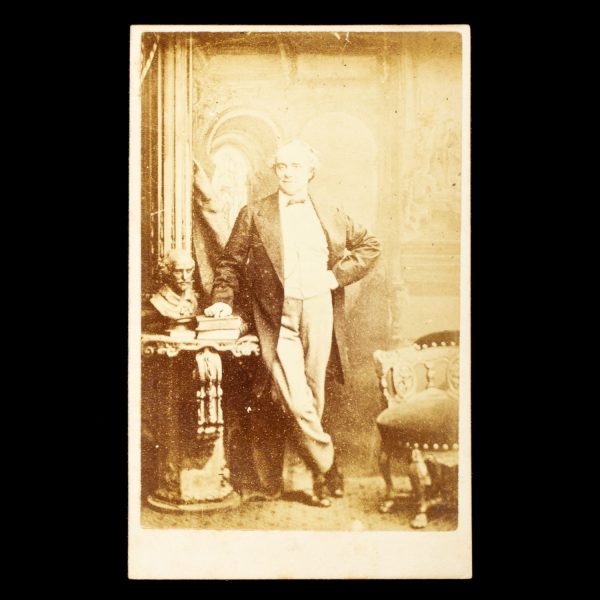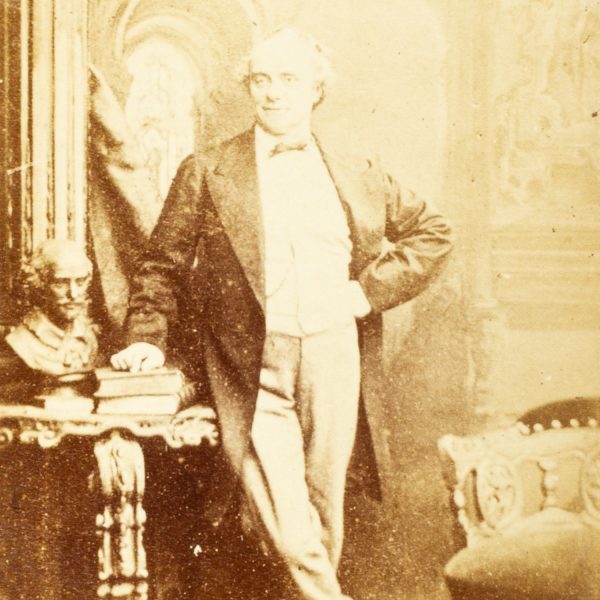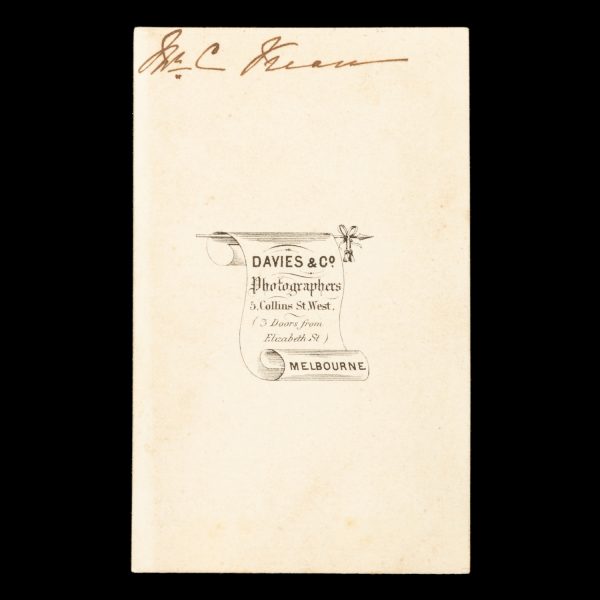# 46882
DAVIES & CO.
Studio portrait of the celebrated Irish actor Charles Kean. Melbourne, 1863.
$200.00 AUD
Albumen print photograph, carte de visite format, 102 x 62 mm (mount); verso with imprint of ‘Davies & Co., Photographers, 5 Collins St. West (3 Doors from Elizabeth St.), Melbourne’, and a fully contemporary inscription in ink identifying the sitter as ‘Mr. C. Kean’; the print has lost some contrast in the upper section, but is in good condition, as is the mount.
In 1863-64 the Irish Shakespearean actor and theatre manager Charles Kean (1811-1868) and his wife, the English actress Ellen Tree (known as Mrs. Charles Kean, 1805-1880) were brought to Australia by George Coppin for a four-month tour. They arrived in Melbourne at the end of September 1863 and performed first there, then at Ballarat (where miners threw gold nuggets onto the stage!), before moving on to Sydney.
This portrait of Kean was taken in the Melbourne studio of Davies & Co., probably at the commencement of the tour. The great actor is posed beside an appropriately chosen studio prop – a bust of Shakespeare.
Trove locates no examples of Davies & Co. cartes de visite of Kean in Australian institutional collections.
From the ADB:
‘[The Keans] opened at the Haymarket Theatre on 10 October but next day Charles lost his voice and the company took a week off. From 19 October to 20 November they performed, despite vicious opposition from Barry Sullivan at the rival Theatre Royal. On 26 November the Kean party arrived at Sydney, which they liked better than Melbourne, and where they were often entertained by Governor Sir Henry Young. They had a successful run from 2 December but on 18 January 1864 Charles became ill with a stomach complaint. His death was widely reported but he recovered and on 23 February they travelled to Ballarat and played for ten nights to enthusiastic houses. Their receipts were higher than elsewhere in the tour: miners gave gold nuggets to Mrs Kean and an old man walked over a hundred miles (161 km) to see them. Encouraged by this ‘star’ treatment, they returned to Melbourne and had a more successful season than before, but bailiffs seized their costumes when the Haymarket lessee fell behind with the rent. Coppin and Kean had to assume management of the theatre. In May the Keans played for two nights at Sandhurst and at Geelong and at Melbourne. On 19 May Ellen developed an abscess in her throat and they abandoned a return to Ballarat and part of a Sydney season. Charles estimated that sickness had cost them three months of the tour and Coppin complained that he had spent £145 on medical expenses. The party played their last Sydney engagement from 27 June to 4 July and the Keans gave readings at the Masonic Hall on 5-6 July. On the 9th they left for California, Ellen remarking, ‘I never left any place with so little regret’.
Charles and Ellen returned to London exhausted but performed in their major roles. On 28 May 1867 Charles took ill in Liverpool and died on 22 January 1868 of a heart complaint. The Queen wrote an unusually personal note to Ellen sharing her own grief for a loved husband. Ellen retired from the stage and died on 20 August 1880, survived by her only child, Mary (1843-1898).
Although the Keans thought their colonial tour was not a success, the Australian public received them with great warmth and critics in the Argus and the Age abased themselves before the Kean image. The sober quality and meticulous performances of Charles and Ellen were new to Australian theatre lovers, who were seeing mature English performers for the first time. As in England, they helped to raise the social standing of actors and the theatre.’









